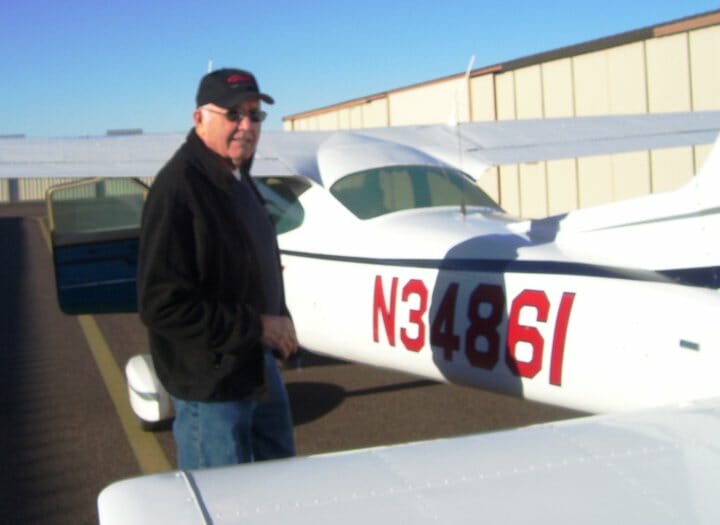
Photo provided by Robert Reser
There is new conversation going on about the recent FAA change regarding teaching slow flight. They make the change. We don’t really need to worry about whether it is right or wrong, it’s now the rule, just keep on teaching flight. Their concern is prevention of loss of control incidents.
Okay, teach slow flight as always. The specific method doesn’t really matter as long as the Student can control flight to any given indicated-airspeed. If proficient in this, he can demonstrate it in the manner the regulators want and at the same time still be safe at the slower indicated-airspeeds as always taught.
This is reminiscent of the olden days when it was deemed safer to make longer power-on approaches rather than the idle-power landings that had always been used. The result is we still have loss of control with base turns to approach. But an unintended consequence is we no longer have any proficiency in idle-power landings, which also happens to be the procedure for making engine-out approaches and landings. Another unintended consequence is burning a lot of training time driving out for the longer approach. If training continued teaching proficiency in idle-power approaches (“short approach”), for certification demonstration purposes, the longer approach is a piece of cake. Anyway we are always subject to doing one or the other on any given landing so must be proficient in all kinds of approaches.
The proposed circular approach and landing currently being tested is also just a variation of normal approaches. The actual turn to base and final is always subject to positioning on the downwind and requires adjustment depending on that and related wind conditions. In addition, the constant turn from downwind to final still requires leveling the wings at some point to check that the final is clear.
Let’s just concentrate on teaching how to control the aircraft in all these situations. If we have the Student proficient enough for a certification ride, we can teach him what to demonstrate on the check ride in a couple of flights.

HANDLING FLIGHT
What is this loss of control we worry about? It’s either stall, takeoff or landings gone wrong or spatial disorientation. These are three distinctly different things. Though consideration of risk taking is extremely valid, once in the air, the pilot must be able to handle any unusual conditions encountered.
How does stall occur? Pulling and holding the control wheel aft…the only way. The Pilot stalls the aircraft…end of story! When maneuvering it is considered normal to use elevator input, however it is important the Student understand the cause of stall and the necessity with maneuvering to release some aft control before allowing the machine to attain stall.
Statistically, off-field landings seldom touchdown before midfield of the chosen area (don’t want to be low or slow). One-half of these fatalities occur from overrunning the site. The idle-power landing proficiency will teach having the landing area unmoving (collision course) on the windshield. This is the desired procedure for all landings. Proficiency in forward slip is attained at the same time.
Landing wind conditions often cause control loss. A Pilot must be aware of strong crosswinds and during landings while slowing from braking, be ready to add power for propeller blast to reduce the weathervaning effect on the fuselage. Added power can often retain or regain marginal directional control even while braking.
Inadvertent IMC
How do you handle spatial disorientation? As described in early model Cessna’s 150 and 172 emergency procedures; turn loose of the control wheel, concentrate and believe the turn and bank instrument or the attitude indicator, with rudder control, push to cause a standard rate turn and hold for one minute, reverse rudder to show zero turn and fly out of the condition. Add some power if needing to assure more terrain clearance. If night, adding power and flying straight ahead may allow re-attaining night references or otherwise turn back in the same manner.
How do we teach aircraft flight control to enable the Student to become proficient in these particular situations? It requires assuring an understanding of how control works. The initial flight is particularly important since the Student will always think that is the way it is done.
A quick way to introduce control to an initial Student is to fly their first few flights without touching the control wheel until landing roundout. This leads to understanding use of rudders to steer for taxi, heading control, and turns. Initial wiggling the pedals for directional control through all ground operation through liftoff teaches more precise steering. Additionally, rudder-only control allows early awareness of the kinesthetic feeling in the seat.
The initial flight is with a set elevator trim to approximate Vx. With takeoff power and mixture set, brake release will accelerate the aircraft and become airborne when proper lift is obtained. When airborne, continued rudder steering toward distant sighted objects and keeping them unmoving maintains directional control.
Once airborne, exercises in power and elevator trim-change for altitude, indicated-airspeed, and level turns with no control wheel input will show the Student what the controls do and how they are used to direct the flight. After the understanding how rudder and power affect flight, use of ailerons and elevator will be incorporated.
This requires the Instructor be proficient in hands-off flight control prior to teaching.
These procedures lead to the concept of “hands-off” flight control as outlined in the 2014 Mar/Apr FAA Flight Safety-Brief, page 13. This article should be required reading for all Pilots.
It has been demonstrated that using the hands-off concept for initial training, a Student can be proficient for solo in five hours and complete all PPL requirements within thirty hours…try it, you may like it!


























































































































